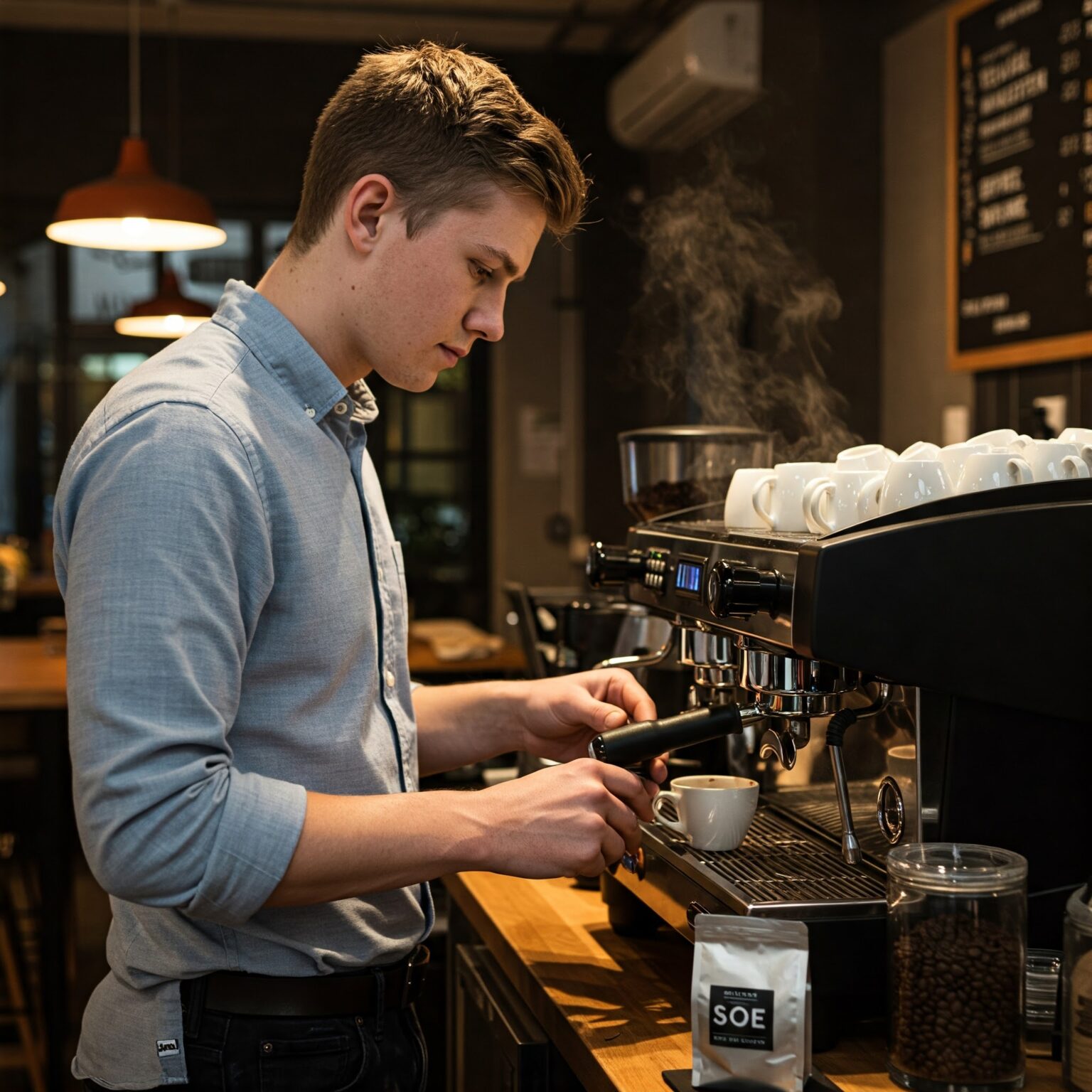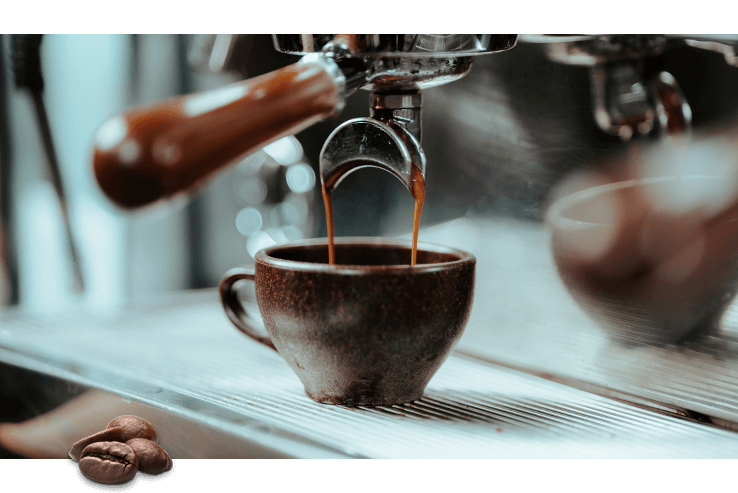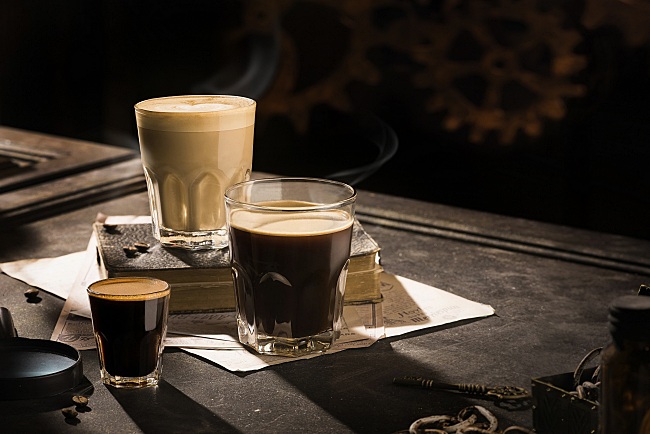Discovering the Abundant Tastes of Coffee Beans: a Deep Study Espresso and Blended Coffee Beans
When you explore the abundant tastes of coffee beans, you discover a complex world where each variety brings its own personality to your mug. Comprehending the origins, refining approaches, and roasting methods can transform your coffee experience. As you navigate via the art of espresso and the creativity behind combined coffees, you'll start to appreciate the subtleties that make each sip distinct. What you'll uncover following may change the means you enjoy your early morning mixture.
The Beginnings of Coffee Beans: Exploring Terroir and Taste Profiles
When you take a sip of coffee, you're not just enjoying a beverage; you're experiencing a rich tapestry of flavors shaped by the beans' beginnings. Each region generates distinct taste profiles affected by altitude, soil, and environment. Beans from Ethiopia commonly burst with brilliant, fruity notes, while those from Colombia often tend to provide a well balanced, nutty sweet taste.
As you explore different origins, you'll observe exactly how terroir-- the environmental factors impacting a plant-- plays a vital function - Single Origin Espresso. The exact same coffee selection can taste considerably various depending on where it's grown
When you think about these variables, you begin to appreciate the complexity behind your cup. Each sip narrates of the land and the farmers who nurtured the beans. Following time you delight, believe concerning the trip your coffee took before it reached your hands, and savor those complex flavors that show its beginning.
Recognizing Coffee: The Art and Science Behind the Brew
When you think regarding coffee, it's not nearly the solid taste; it's additionally regarding the strategies that bring it to life. Comprehending how different preparation approaches influence preference can transform your brewing experience. Allow's discover the intricacies of coffee prep work and reveal the special flavor profiles that make each cup special.
Coffee Prep Work Techniques
Espresso preparation is both a scientific research and an art, integrating precise strategies with a deep understanding of coffee. To begin, you'll wish to pick high-grade, newly roasted beans and grind them carefully for excellent extraction (Single Origin Espresso). The grind dimension is important; as well coarse, and your coffee will be weak, too great, and it'll be bitter
Following, tamp the grounds equally in the portafilter to assure uniform removal. When you secure it into the equipment, go for a brewing temperature level in between 190 ° F and 205 °
F.As you draw the shot, look for the best removal time-- around 25-30 secs. The outcome ought to be a rich, creamy coffee with a gorgeous layer of crema ahead. With method, you'll master these strategies.
Flavor Accounts Explained
The world of coffee offers an abundant tapestry of flavor accounts that can boost your coffee experience. Light roasts usually display brilliant level of acidity and lively tastes, while dark roasts existing much deeper, bolder tones.
A well-crafted blend may integrate the intense notes of an Ethiopian bean with the abundant, chocolatey touches of a Brazilian bean. Welcome the trip of discovering coffee's varied tastes, and you'll transform your coffee ritual into an interesting experience.
Processing Techniques: Just How They Influence Flavor and Fragrance
While it may seem that the beginning of coffee beans is one of the most substantial aspect in identifying their taste and scent, the processing approaches utilized post-harvest play an equally essential duty. You'll discover that these methods can drastically alter the last taste account of your cup.
As an example, the washed process gets rid of the fruit from the beans before fermentation, often causing a cleaner, brighter flavor. The all-natural process leaves the fruit undamaged during drying out, resulting in a sweeter, fruitier profile.
Various other methods, like honey handling, strike a balance, enabling some fruit mucilage to remain, supplying a distinct intricacy.
Each processing method communicates with the beans' integral attributes, boosting or silencing specific flavors and scents. When you sip that coffee or mixed coffee, bear in mind that the trip from cherry to mug is affected not just by origin however additionally by how those beans were processed.
Toasting Strategies: Unlocking the Full Prospective of Coffee Beans
Roasting strategies are vital for disclosing the complete potential of coffee beans, as they transform raw, green beans into the aromatic, delicious coffee you appreciate. The choice of roasting method-- light, medium, or dark-- substantially influences flavor accounts. Light roasts maintain the beans' all-natural acidity and fruity notes, while medium roasts balance sweetness and splendor. Dark roasts, on the various other hand, stress strong, great smoky flavors.
You can experiment with toasting times and temperature levels to discover your best brew. A slower roast at reduced temperature levels enables intricate tastes to establish, while a quicker roast can heighten resentment. Focus on the cracks throughout toasting; the very first fracture indicates a light roast, while the second split signals a dark roast. By understanding these methods, you'll expose a globe of taste, raising your coffee experience to new heights. Enjoy every sip, recognizing the treatment that went into your cup!
The Magic of Blended Coffee: Developing One-of-a-kind Flavor Experiences
Creating an unique taste experience with blended coffee can change your morning routine into an expedition of taste. By incorporating different beans from numerous regions, you can disclose a harmony of flavors that boost your cup to brand-new heights. Each mix offers a distinctive account, balancing level of acidity, sweet taste, and body to you can try here create something absolutely special.
When you pick a blend, you're not just selecting a coffee; you're selecting a trip across varied landscapes and cultures. Exploring with various combinations allows you to discover your individual faves, whether you delight in fruity notes or abundant, chocolatey touches.

Tasting Notes: Identifying the Subtleties in Your Cup
As you sip your coffee, you might see a range of flavors dancing on your taste, each disclosing the complexities of the beans. You may taste the intense level of acidity reminiscent of citrus or the deep, abundant notes akin to dark delicious chocolate. The sweetness might evoke honey or sugar, balancing the overall profile beautifully.
Take note of the body of the coffee-- does it feel light and ventilated, or is it full and velvety? The finish, too, uses clues; a remaining aftertaste may hint at nuttiness or floral undertones.

Do not neglect to discover the one-of-a-kind characteristics of various beginnings, as each area imparts distinctive tastes - Single Origin Espresso. Ethiopian coffees typically present fruity notes, while Colombian beans could display a much more rounded sweet taste. By identifying these nuances, you'll strengthen your gratitude for every cup, elevating your coffee experience to brand-new elevations

Brewing Techniques: Making Best Use Of Flavor Removal for every single Bean
When you explore the numerous developing approaches, you'll find that each method can considerably influence the taste profile of your coffee. From French press to pour-over, each approach extracts various compounds, boosting or muting specific notes. For circumstances, using a French press permits oils to stay in the mixture, producing a richer taste, while pour-over stresses quality and brightness.
Temperature and grind dimension additionally play crucial duties. A coarser work functions best for chilly brews, while a fine grind is perfect for espresso. Try out water temperature level-- in between 195 ° F and 205 ° F-- can disclose concealed flavors, also.
Don't ignore soaking time; a quick extraction can bring about sour notes, while over-extraction may yield anger. By adjusting these variables, you can maximize flavor removal and view publisher site truly raise your coffee experience. Enjoy the journey of uncovering what method ideal suits your taste!
Frequently Asked Concerns
What Is the Perfect Water Temperature for Brewing Coffee?
The ideal water temperature for brewing coffee's between 195 ° F and 205 ° F. If you utilize water that's too hot, you'll over-extract tastes; too chilly, and you will not draw out enough. Purpose for that sweet spot for the ideal brew!
Just How Does Work Size Impact Coffee Taste?
Work dimension substantially affects coffee taste. Better grinds remove much more tastes and oils, resulting in a bolder preference, while coarser grinds return a lighter flavor. Changing work dimension helps you accomplish your desired coffee profile.
Are There Wellness Benefits Surrounding Alcohol Consumption Coffee?

What Is the Difference In Between Arabica and Robusta Beans?
Arabica beans are smoother and sweeter, usually including fruity flavors, while robusta beans are stronger with a bitter preference and greater caffeine content. You'll see these distinctions in scent and brewing experience.
How Can I Shop Coffee Beans for Quality?
To keep coffee beans for freshness, keep them in an airtight container, far from dampness, light, and warmth. If you only grind what you require right before brewing., you'll preserve their flavor much longer.
Checking Out the Abundant Flavors of Coffee Beans: a Deep Dive Into Espresso and Blended Coffee Beans.
When you discover the rich flavors of coffee beans, you uncover an intricate globe where each range brings its own character to your mug.When you take a sip of coffee, you're not just taking pleasure in a drink; you're experiencing a rich tapestry of tastes formed by the beans' beginnings.Roasting methods are crucial for revealing the full potential of coffee beans, as they transform raw, green beans into the aromatic, delicious coffee you enjoy.As you sip your coffee, you could see a spectrum of tastes dancing on your taste, each exposing the details of the beans.